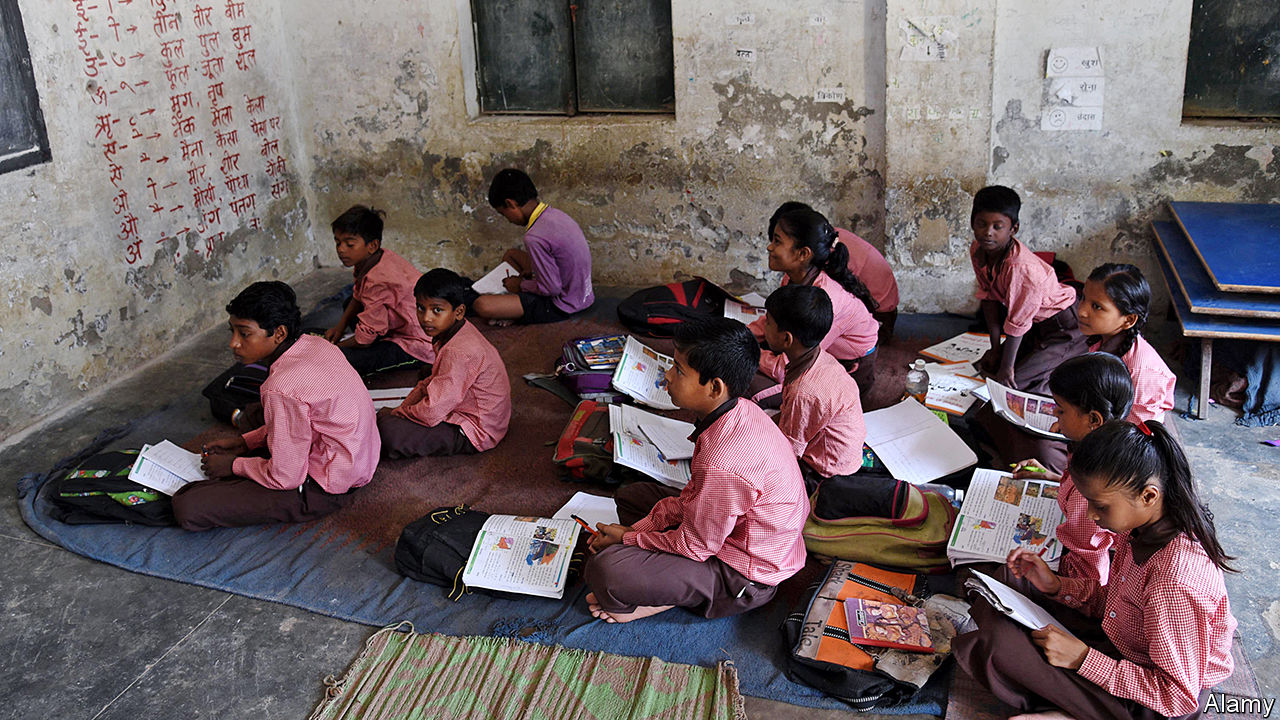There is so much good in the recently announced National Education Policy (NEP) that it seems churlish to point out its failings. It will receive well deserved applause. However, the truth is that it has failed to come to grips with the crisis in Indian education. I will focus only on schooling, the crucial foundation of the edifice. Instead of three cheers, I am afraid I can only offer it one and a half.
NEP has many excellent recommendations. It clearly shifts the focus away from inputs to outcomes. It junks rote learning in favour of critical thinking, conceptual and creative skills. Its best feature is to launch a mission to achieve basic language and math skills by Class 3 for all children by 2025. Tracking a student in Classes 3, 5 and 8 through a reliable, standardised assessment will help improve her performance, allowing her parents to make an informed choice among schools.
Finally, it separates the government’s role into two bodies, one that regulates education and a second that runs state schools. Thus, it overcomes a conflict of interest which has forced regulators to gloss over the disastrous performance of state schools while shackling private schools in a penalising licence raj.
With all this, why doesn’t NEP get three cheers? Because it hasn’t honestly faced the ground reality of these eight facts. Fact 1: One out of four teachers is absent in state schools across India and one in two, who is present, is not teaching. This is not because of low teacher salaries – starting salary of a junior teacher in UP last year was Rs 48,918 pm, or 11 times UP’s per capita income.
Fact 2: In many states, less than 10% of teachers pass the Teacher Eligibility Tests. Fact 3: Less than half the students in Class 5 can read a para or do a maths sum from a Class 2 text. Fact 4: India’s children ranked 73rd out of 74 countries in the international PISA test of reading, science and arithmetic (just ahead of Kyrgyzstan). The UPA government was so embarrassed – it banned the test.
Fact 5: As a result of this rot, even the poor are abandoning government schools. Between 2011 and 2018, 2.4 crore children left state schools and joined private schools, according to the government’s own DISE data. Today, almost half of India’s children (47.5%) are in the private school system, with 12 crore children, making it the third-largest in the world. In it, 70% parents pay a monthly fee of less than Rs 1,000 and 45% of parents pay less than Rs 500. Hence, India’s private schools are not elitist.
Fact 6: But good private schools are very few and it’s heartbreaking to see long lines of parents waiting to get their child into a decent school. The reason is that it’s difficult for an honest person to start a school. From 35 to 125 permissions are required depending on the state, and can take up to five years and lakhs in bribes. Hence, idealistic educators stay away and private schools end up mediocre.
Fact 7: If the rate of emptying of government schools continues, “they will be history” as Amartya Sen put it. Many are already ghost schools with teachers but no students. Fact 8: Overall, it costs a third to educate a child in the private system versus the government system as a result of efficiency. Society as a whole, thus, gains through better learning outcomes at a lower cost.
Framers of the NEP did not face up to these inconvenient eight truths. Why should a parent spend hard-earned money to send her child to a private school when she can be educated free plus get a mid-day meal, uniforms and books in a state school? Parents are not stupid and exit state schools because of governance failure, not pedagogy. If the teacher is absent or doesn’t teach, what would you do? State teachers get away because they monitor the polls and politicians are afraid to touch them.
So, what is the answer? The only solution is to fund children, not schools. This idea was first mooted in 2000 when Prime Minister Atal Bihari Vajpayee realised that government schools kept failing despite 50 years of reforming them. The idea is simple: When a child reaches age 5, she qualifies for a monthly scholarship for any school of the parent’s choice. Teachers are paid salaries from the income a school earns from scholarships; so, they show up and teach with inspiration. With competition good schools will flourish, bad schools will close.
The poorest child will have dignity because she will have the power to exit a bad school. The government will have plenty of money for scholarships from not having to run schools plus the money from the sale/ lease of its schools.
Read the rest of the article here. This article was originally published on the Times of India website on 1st of August, 2020.
Read more: NEP Hits Bull’s Eye By Fixing Regulatory Framework For Schools
Post Disclaimer
The opinions expressed in this essay are those of the authors. They do not purport to reflect the opinions or views of CCS.




